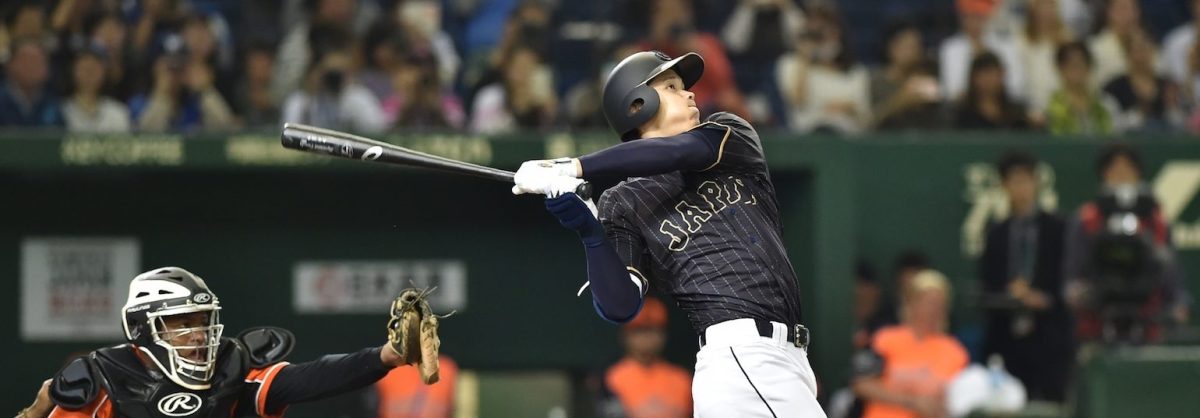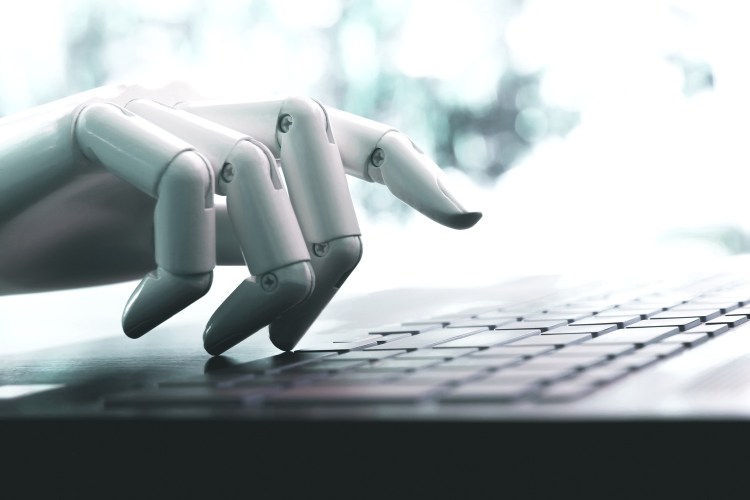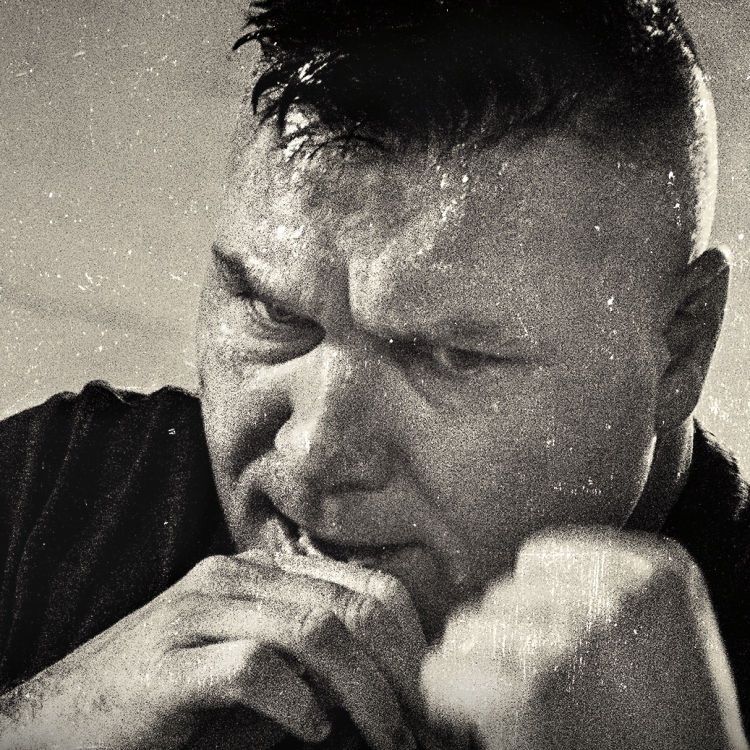Shohei Ohtani is the dreamiest of dream baseball prospects: he pitches, he hits for power, and you get to pay him a fraction of his true market value. (More on that last one momentarily.) Let’s be clear: Ohtani would be an exciting acquisition even if the Los Angeles Angels forbid him ever to touch a bat again. Standing 6’4” and only 23, his career record in Japan was 42-15 with an ERA of 2.52. He averaged better than a strikeout per inning thanks in part to a fastball that’s been measured at 102.5 mph coupled with what the Angels claim is an ability to throw “three off-speed pitches for strikes.”
Wait, there’s more. When Ohtani steps to the plate, good things happen. During his five seasons in Japan, he hit .286 with an on-base percentage of .358 and a slugging percentage of .500. These numbers get even more impressive when you remember for part of this time he was a teenager battling adults at Japan’s highest pro level. In the video below, he hits a ball that seems determined to leave our atmosphere.
Of course, such a unique player produces a unique set of anxieties. If he has health problems, you’re losing both a promising young bat and a top arm. With that in mind, orthopedic surgeon Dr. David Geier (the author of That’s Gotta Hurt: The Injuries That Changed Sports Forever) helps assess the potential risks of having a player who wants to do it all. One future concern has already been discovered as Ohtani’s physical revealed damage to the ulnar collateral ligament (UCL) in his pitching elbow.
First though, here’s a look at reasons why, if Ohtani succeeds both throwing the ball and crushing it, he’ll be following a path that even Babe Ruth couldn’t walk for very long.
The Pitcher at the Plate Problem. Throughout baseball history, players have been able to pitch or hit, but not both. “Good-hitting pitchers” may have solid stretches, but they ultimately put up numbers that would earn a non-hurler a bus ticket straight to A ball. In 1925, Hall of Famer Walter Johnson hit .433 over 107 plate appearances. Even with a season to make Ted Williams swoon, the Big Train’s career average was only .235. San Francisco ace Madison Bumgarner has won two Silver Sluggers and hit 17 total home runs over nine seasons, but his career average is still well below the Mendoza Line at .185.
Pitchers tend to come up particularly short in the power department. Bumgarner has a .322 career slugging percentage, while Johnson didn’t fare much better at .342. To put these figures in perspective, Bumgarner’s Giants tied for the most losses in 2017 while recording the worst slugging percentage in the majors… and even they managed to reach .380.
Geier noted this ineptitude is, at first glance, bizarre: “At the high school level, so many of a team’s best pitchers are probably also their best batters.”
Of course, baseball today is a game of specialization, from the relentless use of the bullpen to the switches to allow for more statistically favorable matchups at the plate. This means a promising pitcher focuses on pitching: “They get to the minors and they’re never allowed to bat.”
Which makes sense. A tremendous starting pitcher who can’t rake to save his life is worth more than a meh starter who lays down really solid bunts. (Similarly, the Philadelphia Eagles have never mused, “Our quarterback Carson Wentz is big and athletic—why don’t we have him do some linebacking in his spare time?”)
Interestingly, in recent years baseball actually saw what happened when an elite pitcher focused entirely on hitting. At age 20, Rick Ankiel established himself as a promising starting pitcher, going 11-9 for the Cardinals in 2000. Then he lost control—not of his life, but of his pitches. It’s a meltdown that remains both horrifying and oddly hypnotic to watch.
By 2004, Ankiel had thrown his last pitch in the majors. He wasn’t done with baseball though. By 2007, he returned to the majors as an outfielder and stuck around until 2013. Yet while it was an amazing case of a player reinventing himself, he was hardly flirting with Cooperstown. (Ankiel’s career average was .240.)
There remains only one man who could do it all: Babe Ruth.
The Babe and Ohtani’s Best-Case Scenario. The Babe was a great hitter and he was also a great pitcher. But except for a brief window, he pursued those activities separately.
For the first six seasons of his career, Ruth played with the Red Sox and mostly pitched. He went 89-46 with a 2.19 ERA and threw a staggering 105 complete games, while still finding the time to hit 49 home runs.
For part of two of these seasons, Ruth did it all. In 1918, he was 23. (Yes, the age Ohtani is now.) The Bambino started 19 games on the mound and 59 in the outfield. He batted .300 and led the league with a slugging percentage of .555 while tying for the lead in homers with 11 while going 13-7 with a 2.22 ERA.
In 1919, Ruth started 15 games on the mound and 106 as an outfielder. His average increased to .322, his slugging percentage to .657, his home runs to a then-record 29, and he generally dominated the American League. He still went 9-5 as a pitcher with a 2.97 ERA, but now it was clear that his future would be at the plate. (And in New York, since the Yankees acquired him.)
For the next 16 seasons Ruth only took to the mound five times, picking up the win all five. This is when the Babe recorded 659 home runs. (The last six of his 714 dingers came during his brief tenure with the Boston Braves.)
Ohtani may never approach any of the Babe’s remarkable numbers as either a batter or pitcher, but unlike the Bambino, Ohtani is committed to being a starting pitcher and still stepping to the plate between starts for as long as his team lets him. Here are ways Ohtani may be able to compete as both an elite pitcher and batter for longer than the Babe managed:
Stay Out of the Outfield. In 1973, the American League adopted the designated hitter rule, sparing pitchers from hitting and one-hitter from having to field. While Ohtani played the outfield occasionally earlier in his career, by 2015 he switched exclusively to pitching and DH. In what is likely not a coincidence, Ohtani reached a new level of excellence at both the plate and on the mound. In 2016, he won both the MVP and the Japan Series as he batted .322 with 22 home runs while going 10-4 with a 1.86 ERA.
The Angels have stated they won’t let Ohtani play in the outfield in 2018. Geier fully approves: “I don’t want him throwing into home plate repeatedly. You want to avoid the things where he’s potentially going to overuse his arm.”
Be Careful on the Basepaths. In 2017, Ohtani had surgery on his right ankle after injuring it while running the bases. He should have made a full recovery by 2018, but it’s worth remembering the bases are a land where strange injuries happen. Geier is particularly concerned about “the sudden lunges that cause a hamstring strain.”
It should be noted that Ohtani reportedly ran from home to first in just 3.8 seconds, which would rank among the fastest times in all of Major League Baseball. In 2016, he even stole seven bases in nine attempts. Geier noted that although Ohtani may be surprisingly quick, this is a part of his game that should not be explored. While supporting the Angels letting Ohtani “get up there and be a slugger,” Geier said the most important thing is to “protect your pitching asset.” Which means if it comes down to urging Ohtani to try to leg out a triple or hold up at second, the Angels should not only put up the stop sign, but seriously consider subbing in a pinch runner too. Related to this…
Don’t Get Greedy. Japanese teams play a 143-game schedule, compared to 162 games in the U.S. Ohtani has never started more than 24 games as pitcher in Japan or played more than 104 games total.
There will be an impulse to increase both these totals. “I’m not sure I would disrupt his routine,” Geier warned, noting that Ohtani is already generating such unique results it’s necessary to be careful not to push him too far.
(Speaking of preservation, Ohtani received a platelet-rich plasma injection in his pitching elbow in October in response to his UCL. Angels GM Billy Eppler has stated his team is not concerned about this: “Based on the readings of those MRIs, there are not signs of acute trauma in the elbow. It looks consistent with players his age.” Geier said if this measure is purely “preventative” it shouldn’t be too worrying, but noted that UCL damage can lead to “Tommy John” surgery, which often halts pitcher careers for over a year.)
The Angels seem sensitive to the risk, noting they may even use a six-man rotation in an attempt to minimize the number of pitching starts Ohtani makes. Will Ohtani require a day off before each pitching start to prepare? Will he require a day off after each pitching start to rest? It should all be granted and then some. Because whatever happens with Ohtani this season…
He May Be Baseball’s Greatest Bargain Ever. Will Ohtani find success as a pitcher, a hitter, both, or neither? If he can excel at just one of his positions he’ll be among the best values in the game because the Angels needed to risk shockingly little to discover the answer.
Ohtani was so determined to play in the United States that he agreed to financial restrictions that may cost him well over $100 million. Upon signing with the Angels, Ohtani collected a bonus of $2.315 million while his old team received a $20 million posting fee. He reportedly signed for a salary of just $545,000 per year for the next three seasons.
To put this in perspective, his new teammate Albert Pujols earned $26 million playing almost exclusively at DH in 2016 while across town Dodger pitcher Clayton Kershaw collected $33 million. Meaning Ohtani may be not only baseball’s most intriguing player, but also its best investment since the Yankees shelled out $125,000 for a Red Sox star nicknamed Babe.
Whether you’re looking to get into shape, or just get out of a funk, The Charge has got you covered. Sign up for our new wellness newsletter today.
























